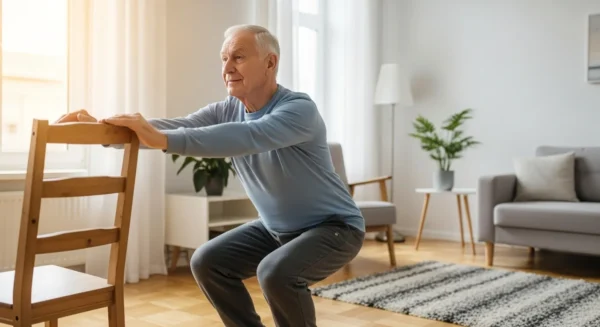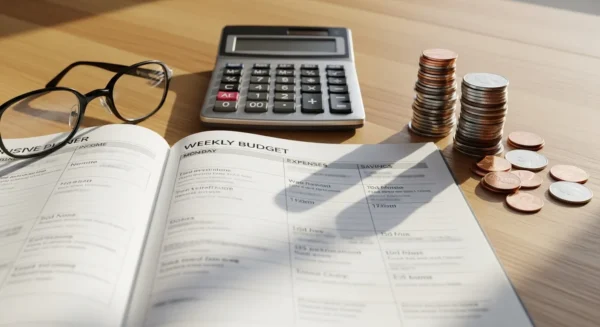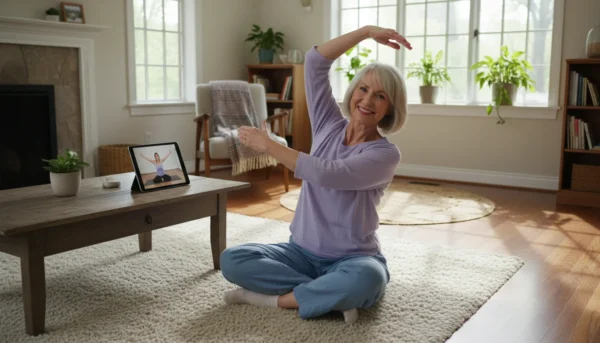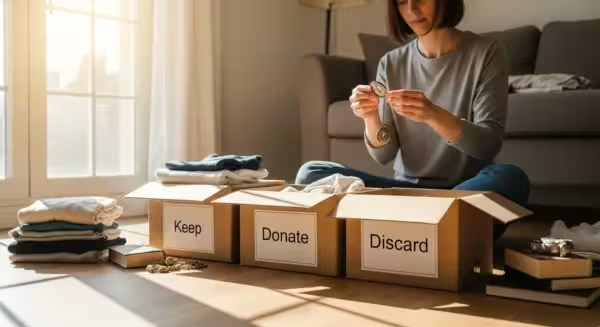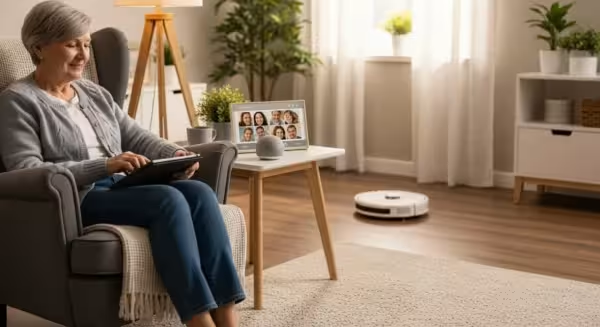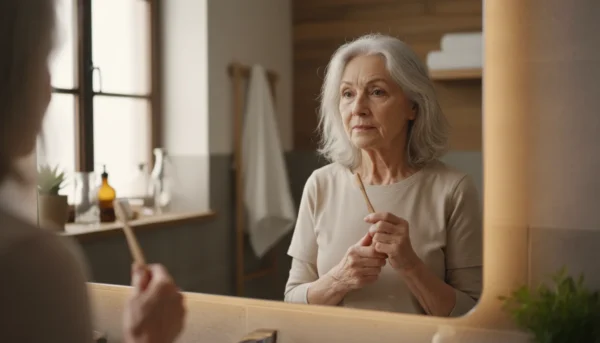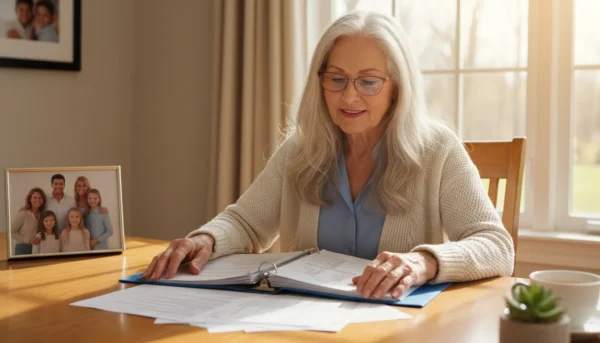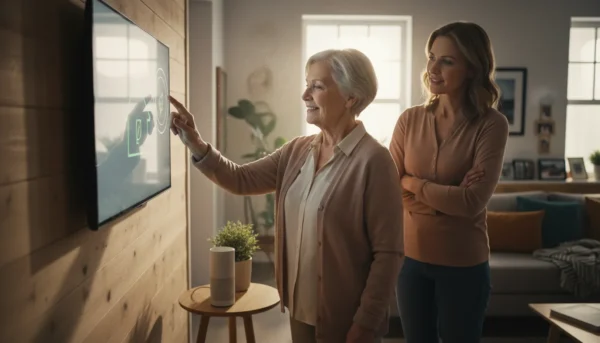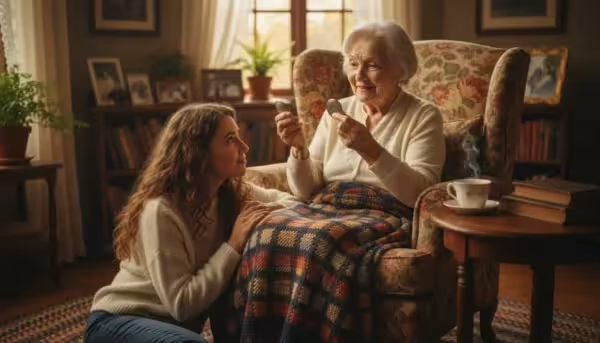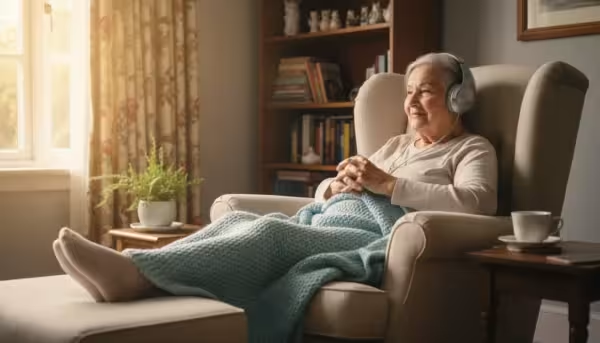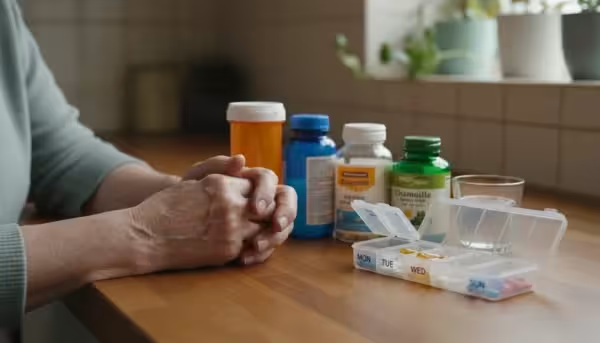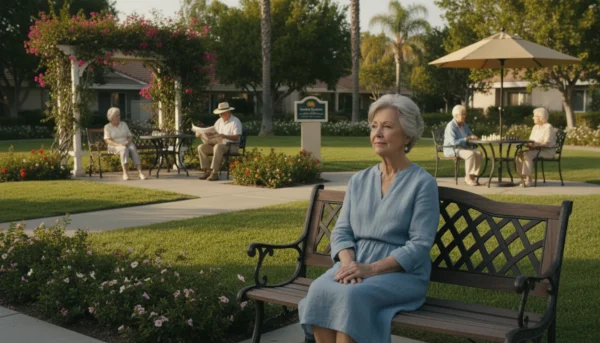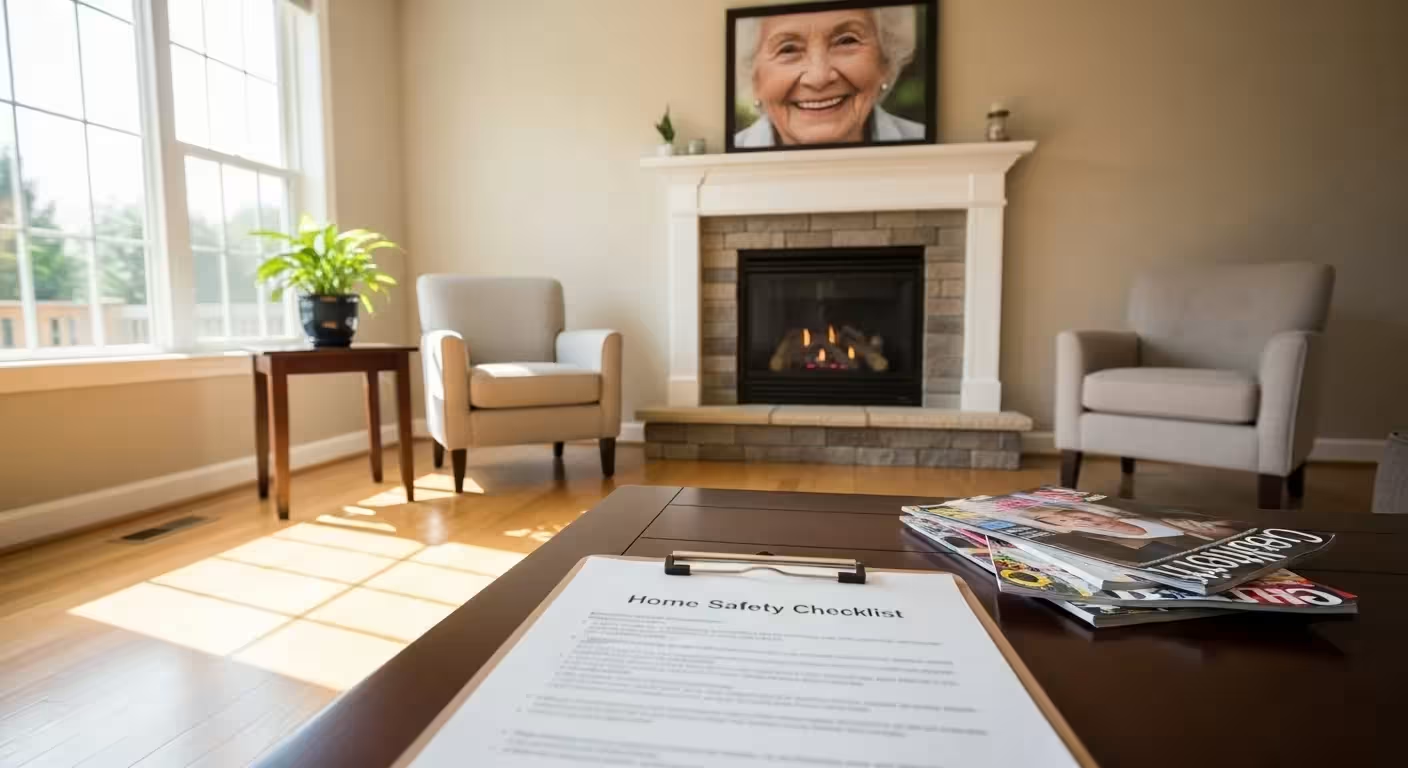
Hello, and welcome. Taking proactive steps to maintain your health and independence is one of the most powerful things you can do. If you’re living alone, you cherish your space and your routine, and ensuring your home remains a safe haven is paramount. The fear of falling can sometimes feel limiting, but we’re here to turn that concern into confidence.
Think of this guide not as a list of restrictions, but as a collection of empowering habits and adjustments that help you continue to live a full, active, and safe life on your own terms. Preventing a fall is about creating a secure environment and building a stronger, more stable you. Let’s walk through these practical senior safety tips together.
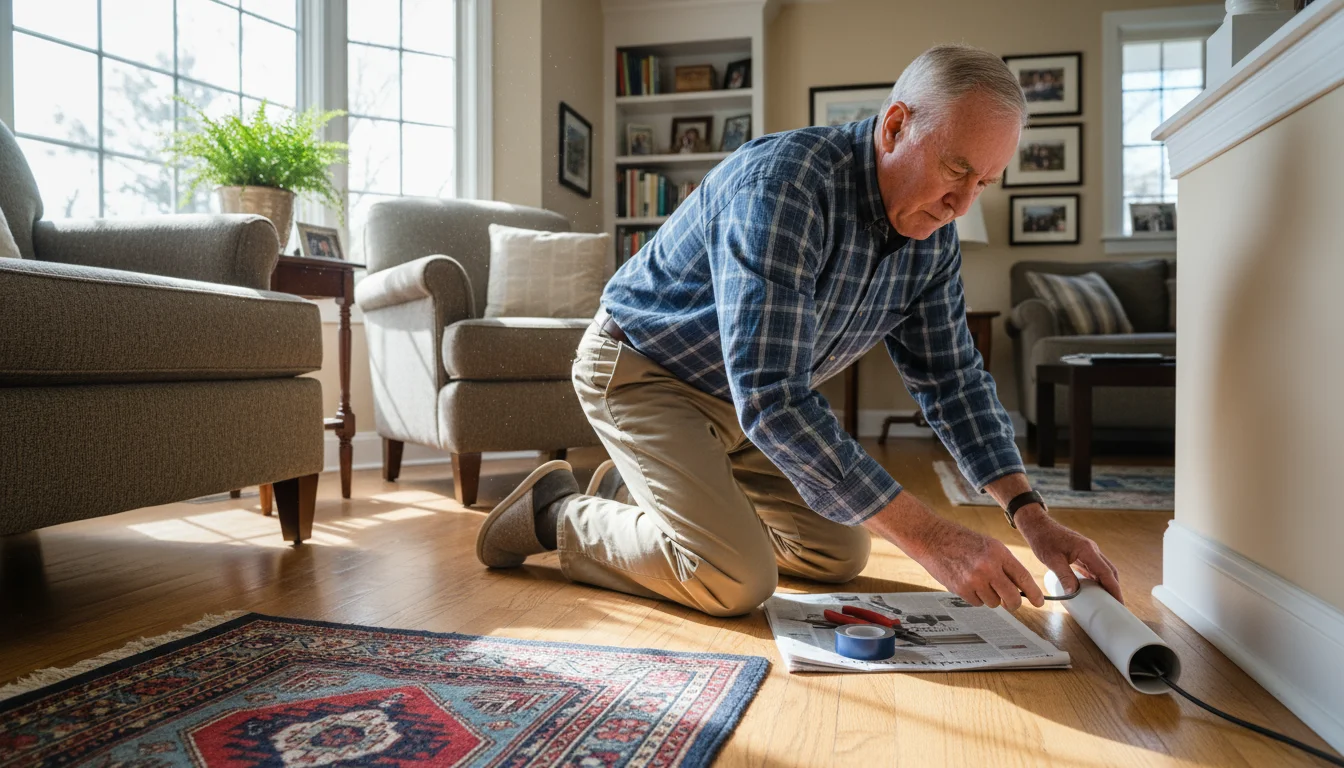
1. Conduct a Home Safety Audit
The ‘Why’: Your home is your sanctuary, but over time, small hazards can appear without you even noticing. The vast majority of falls happen right at home. By methodically checking your space for common risks, you can eliminate most potential dangers before they ever cause a problem. This is a foundational step in home safety for seniors.
The ‘How’:
- Clear the Pathways: Look at the main routes you take every day—from your bed to the bathroom, your chair to the kitchen. Remove anything that obstructs these paths, such as stacks of magazines, shoes, or decorative items on the floor. Pay special attention to electrical cords and cables; run them along the wall or use cord covers to secure them.
- Secure Your Rugs: Small throw rugs are a major tripping hazard. The best option is to remove them entirely. If you love your rugs, ensure they have a non-slip backing or secure them to the floor with double-sided rug tape. Check that the edges of any larger area rugs or carpets are not curled up.
- Check Your Stairs: If you have stairs, they need special attention. Make sure there is bright lighting over the entire staircase. There should be sturdy handrails on both sides of the stairs. If your stairs are not carpeted, consider adding non-slip treads for better grip.
- Arrange Furniture Wisely: Is your furniture arranged to allow for wide, clear walkways? You shouldn’t have to turn sideways or carefully maneuver around a coffee table or ottoman.
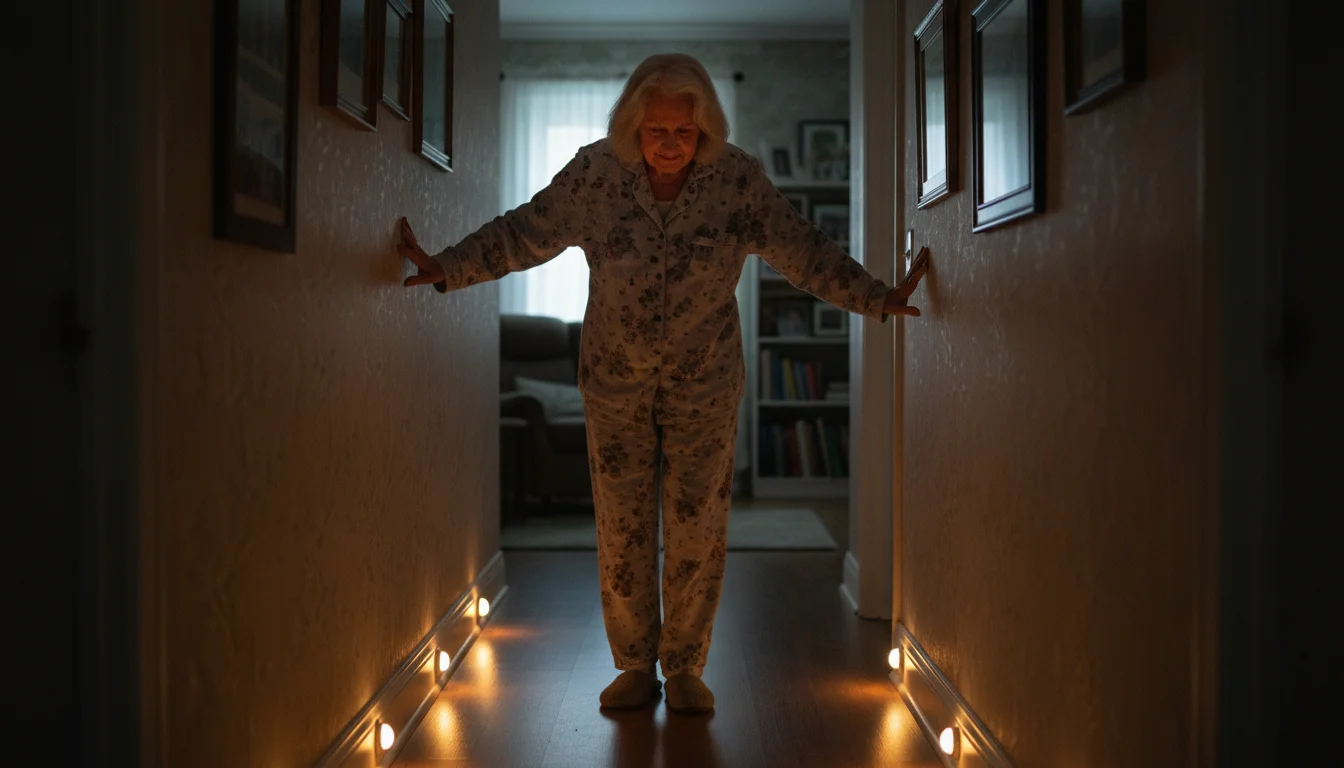
2. Brighten Your Environment
The ‘Why’: As we age, our eyes need more light to see clearly. Dimly lit rooms, hallways, and staircases can hide tripping hazards and make it difficult to judge distances and steps accurately. Good lighting is one of the simplest and most effective ways to prevent falls for older adults.
The ‘How’:
- Increase Bulb Wattage: Check the lamps and fixtures in your home. Use the highest wattage bulbs recommended for your fixtures to create a brighter space. LED bulbs are an excellent choice as they are bright, energy-efficient, and last a long time.
- Install Nightlights: Place automatic, light-sensing nightlights in your bedroom, hallways, and especially the bathroom. This ensures you have a safely lit path for any middle-of-the-night trips, when you may be groggy.
- Keep a Light Within Reach: Place a lamp or a flashlight right next to your bed. This way, you never have to walk through a dark room to get to a light switch.
- Use Natural Light: During the day, open your curtains and blinds to let as much natural sunlight in as possible. It’s good for your mood and your safety.
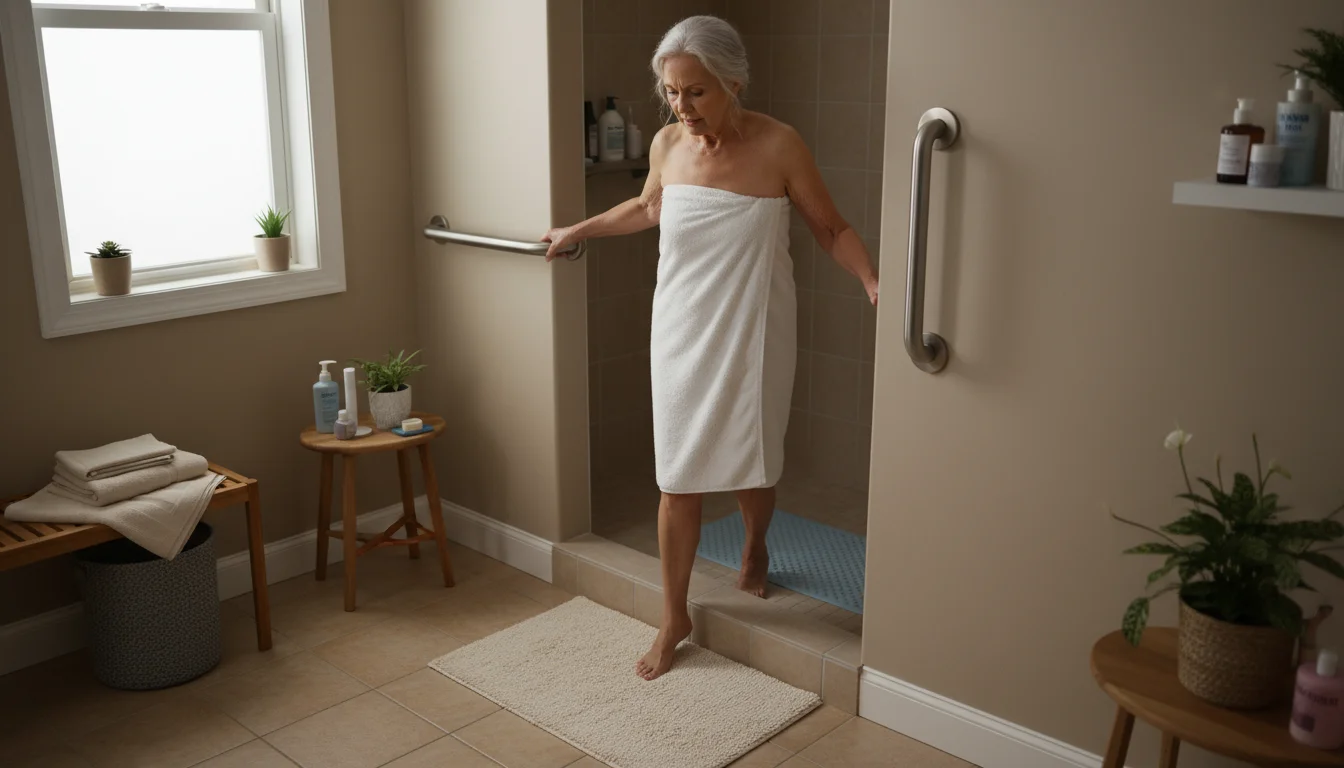
3. Make the Bathroom a No-Fall Zone
The ‘Why’: The combination of hard surfaces, water, and the need to get in and out of the tub or shower makes the bathroom one of the most common places for a serious fall. Prioritizing bathroom safety is non-negotiable.
The ‘How’:
- Install Grab Bars: This is the single most important bathroom modification. Have sturdy grab bars professionally installed inside the shower/tub, outside the shower/tub, and next to the toilet. Important: Towel racks and soap dishes are not designed to hold your weight and should never be used for support.
- Use Non-Slip Surfaces: Place a non-slip mat or self-stick adhesive strips on the floor of your bathtub or shower. Also, use a non-slip bath mat on the floor outside the tub for when you step out.
- Consider a Shower Chair and Handheld Shower Head: A sturdy shower chair or bench allows you to sit while you bathe, which greatly reduces the risk of slipping. A handheld shower head makes this much more convenient and safe.
- Install a Raised Toilet Seat: If you find it difficult to sit down on or stand up from the toilet, a raised seat can make a significant difference, reducing strain and instability.
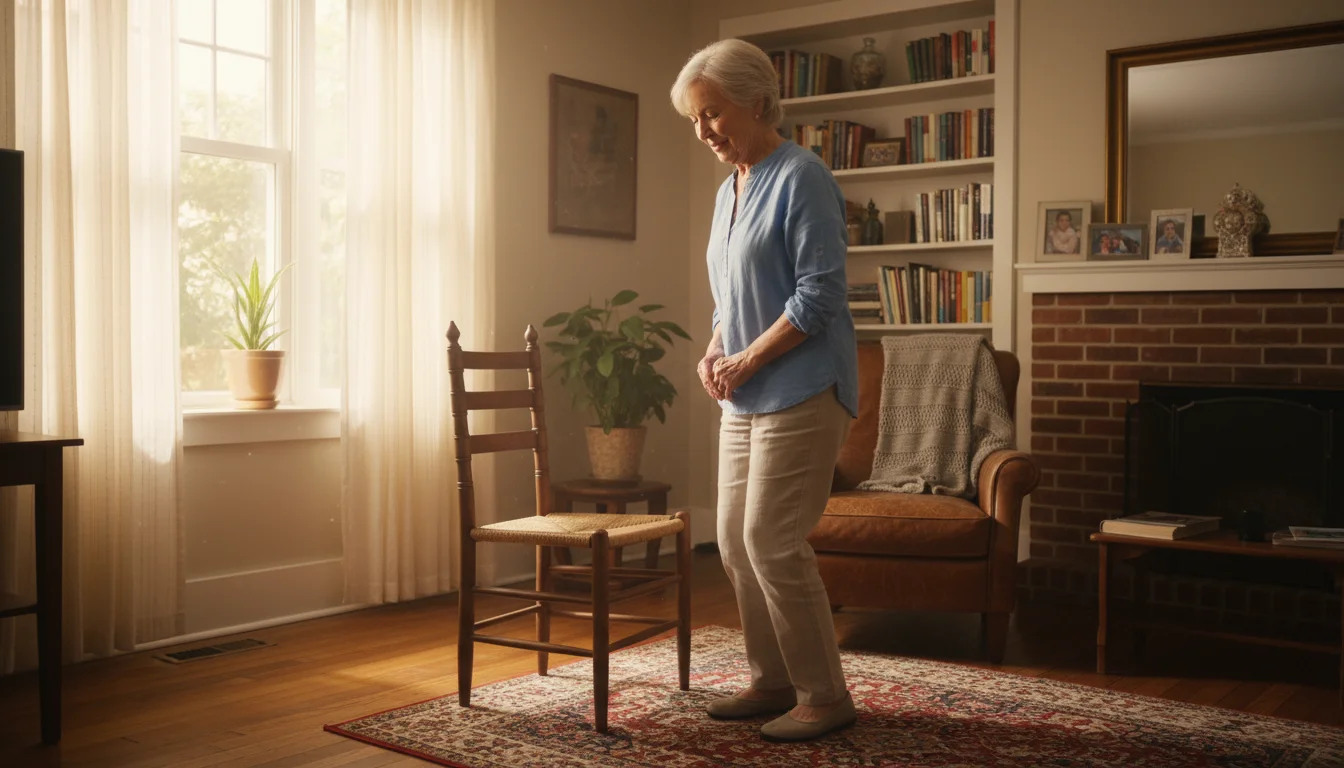
4. Build Your Strength and Balance
The ‘Why’: Physical weakness, particularly in the legs, and poor balance are direct contributors to fall risk. The good news is that strength and balance can be improved at any age. Think of these exercises as your personal fall-prevention insurance policy. Strong muscles react faster and support you better if you do start to stumble.
The ‘How’:
- Chair Stands: Sit in a sturdy, armless chair with your feet flat on the floor. Without using your hands, slowly stand up. Then, slowly sit back down with control. Aim to do this 8-10 times. This builds crucial leg and core strength.
- Single Leg Stance: Stand behind a sturdy chair or next to a kitchen counter, holding on for support. Lift one foot off the floor and try to balance on the other leg for up to 30 seconds. Switch legs and repeat. As you get more confident, you can try holding on with just one hand, then one finger, and eventually try to let go completely.
- Heel-to-Toe Walk: Stand next to a wall or counter for support. Take a step by placing the heel of one foot directly in front of the toes of the other, as if walking on a tightrope. Take 10-15 steps. This exercise directly improves your balance while walking.
- Consider a Class: Activities like Tai Chi are fantastic for improving balance and stability in a gentle, low-impact way. Many senior centers offer these classes.
A friendly reminder: Always consult with your doctor or a physical therapist before starting any new exercise program. They can help you create a plan that is safe and effective for you.
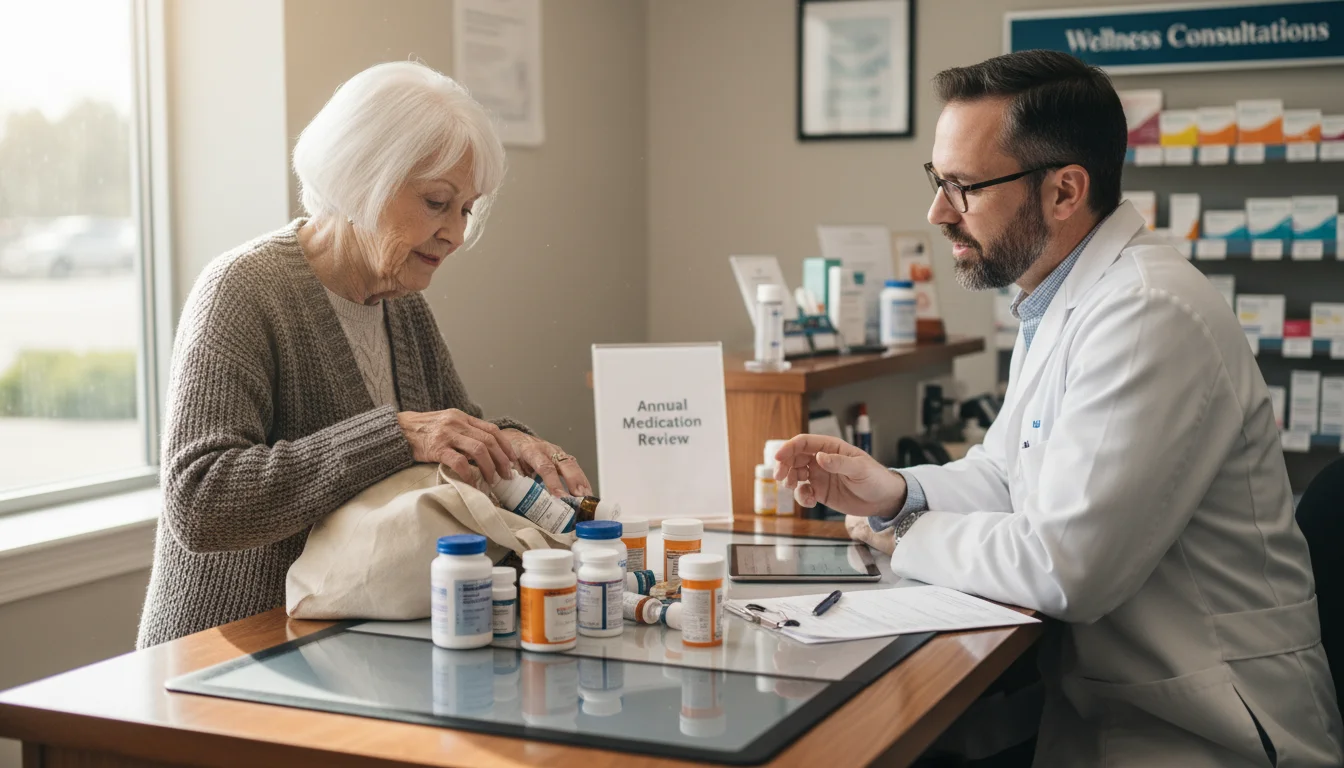
5. Review Your Medications Annually
The ‘Why’: Many common medications—for blood pressure, sleep, mood, and more—can have side effects like dizziness, drowsiness, or confusion. When you take multiple medications, the risk of these side effects can increase, directly impacting your balance and raising your fall risk.
The ‘How’:
- Schedule a “Brown Bag Review”: At least once a year, gather all of your medications—prescriptions, over-the-counter drugs, vitamins, and supplements—in a bag and take them to your doctor or pharmacist.
- Ask Key Questions: Ask them to review everything to check for potential interactions or side effects. Ask, “Could any of these medications make me dizzy or increase my risk of falling?”
- Keep an Updated List: Always maintain a current list of your medications and their dosages. Carry it in your wallet and bring it to all medical appointments.
- Report Side Effects: If you ever feel dizzy, lightheaded, or unsteady after taking a medication, contact your doctor right away. Don’t just stop taking it; a simple adjustment might solve the problem.
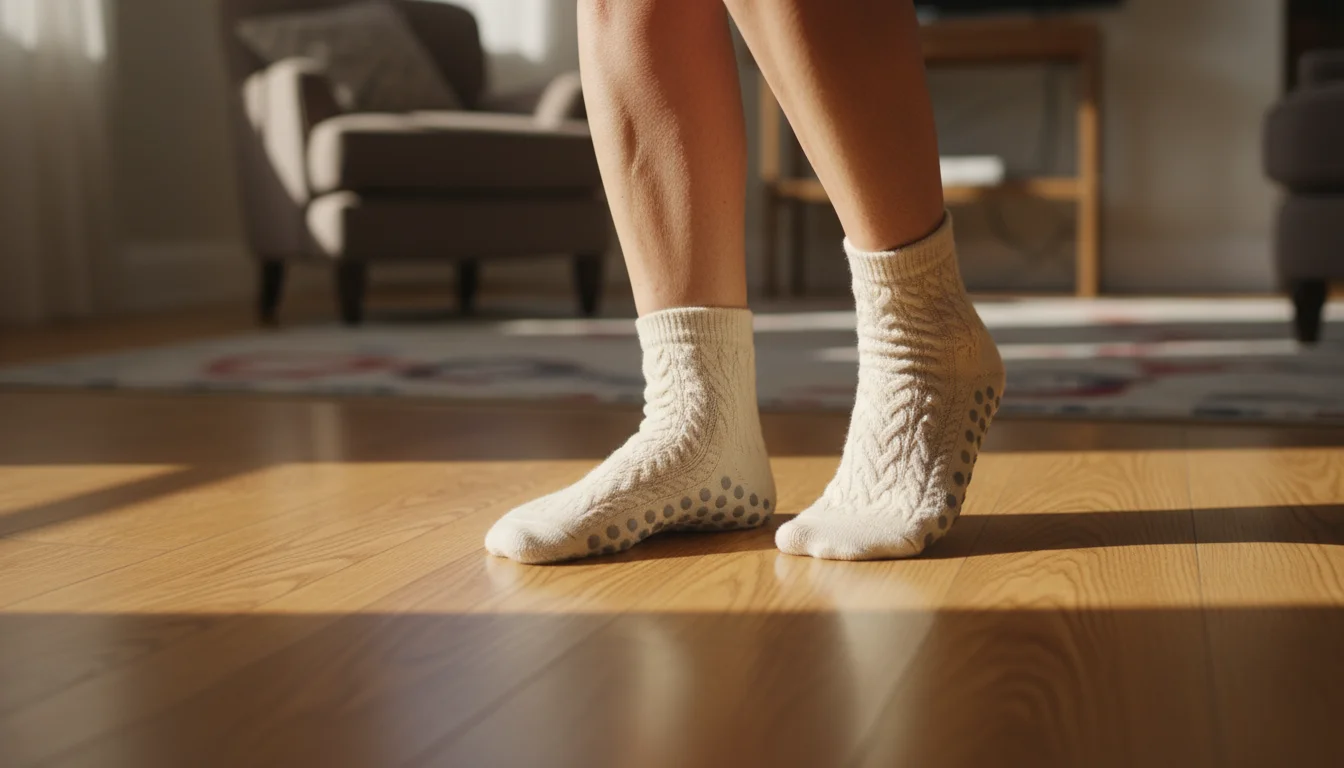
6. Wear Safe and Sensible Footwear
The ‘Why’: The connection between your feet and the ground is critical for stability. Wearing floppy slippers, socks without grips, or ill-fitting shoes can make you more likely to slip, stumble, or turn an ankle. The right footwear provides a stable base of support.
The ‘How’:
- Choose Shoes with Non-Skid Soles: Look for shoes that have a good grip. Rubber soles are generally better than smooth leather ones.
- Ensure a Proper Fit: Your shoes should be snug but not tight, with a low, wide heel. Avoid high heels, narrow-toed shoes, and backless slippers or flip-flops.
- Never Walk in Socks: If you prefer not to wear shoes in the house, wear non-slip socks with rubber grips on the bottom to provide traction on wood or tile floors.
- Check Your Clothing: Be mindful of clothing length. Pants, skirts, and robes that are too long can easily get caught under your feet and cause a trip.
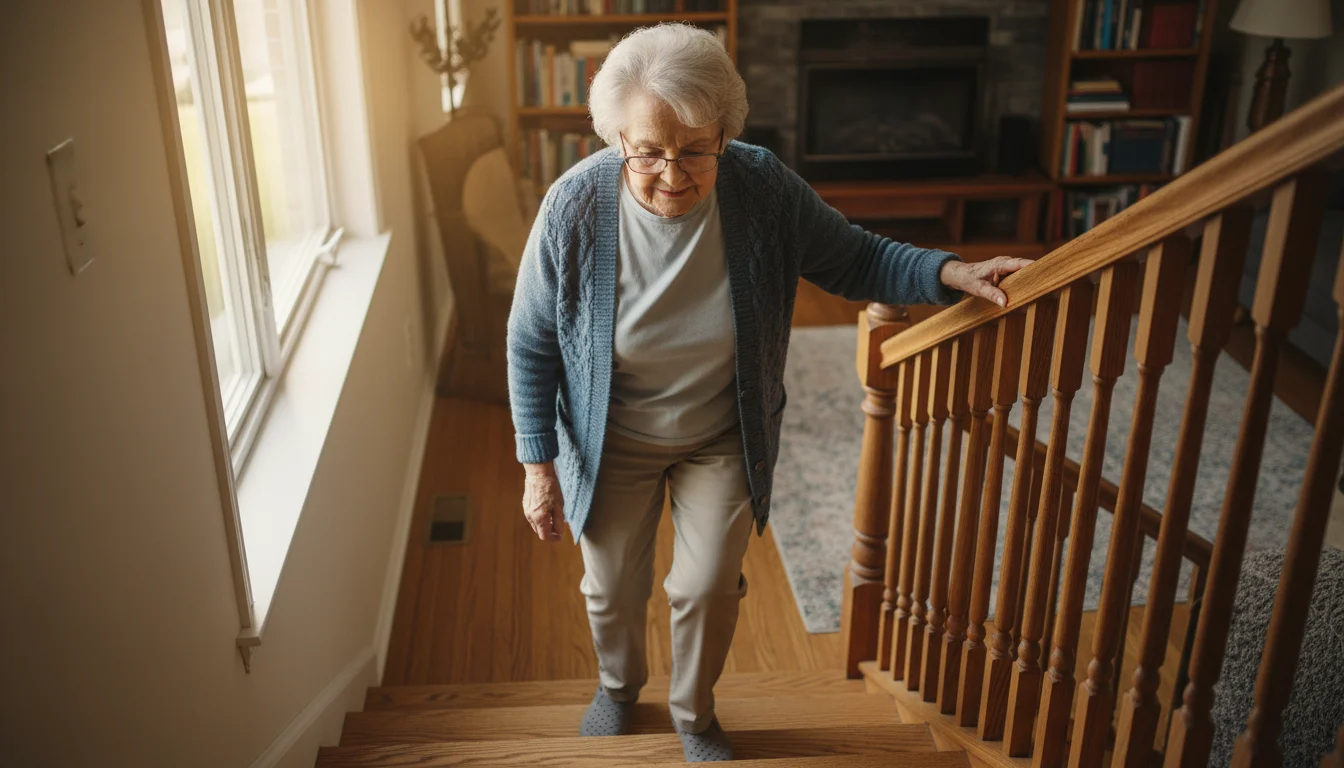
7. Prioritize Your Vision and Hearing
The ‘Why’: Your senses are essential tools for navigating the world safely. Your vision helps you spot hazards, and your inner ears play a crucial role in your sense of balance. Keeping them in top condition is a key part of any senior safety plan.
The ‘How’:
- Get Annual Eye Exams: Have your vision checked by an eye doctor every year. This ensures your glasses or contact lens prescription is up-to-date. It also allows the doctor to check for conditions like cataracts or glaucoma, which can impair vision and increase fall risk.
- Adjust to New Glasses: When you get new glasses, especially bifocals or progressives, give yourself time to get used to them. Practice walking around your home first before you go out. Be extra careful on stairs.
- Have Your Hearing Checked: Don’t dismiss hearing loss as a normal part of aging. Some balance problems originate from issues in the inner ear, so it’s important to have your hearing evaluated if you or your family notice a change.
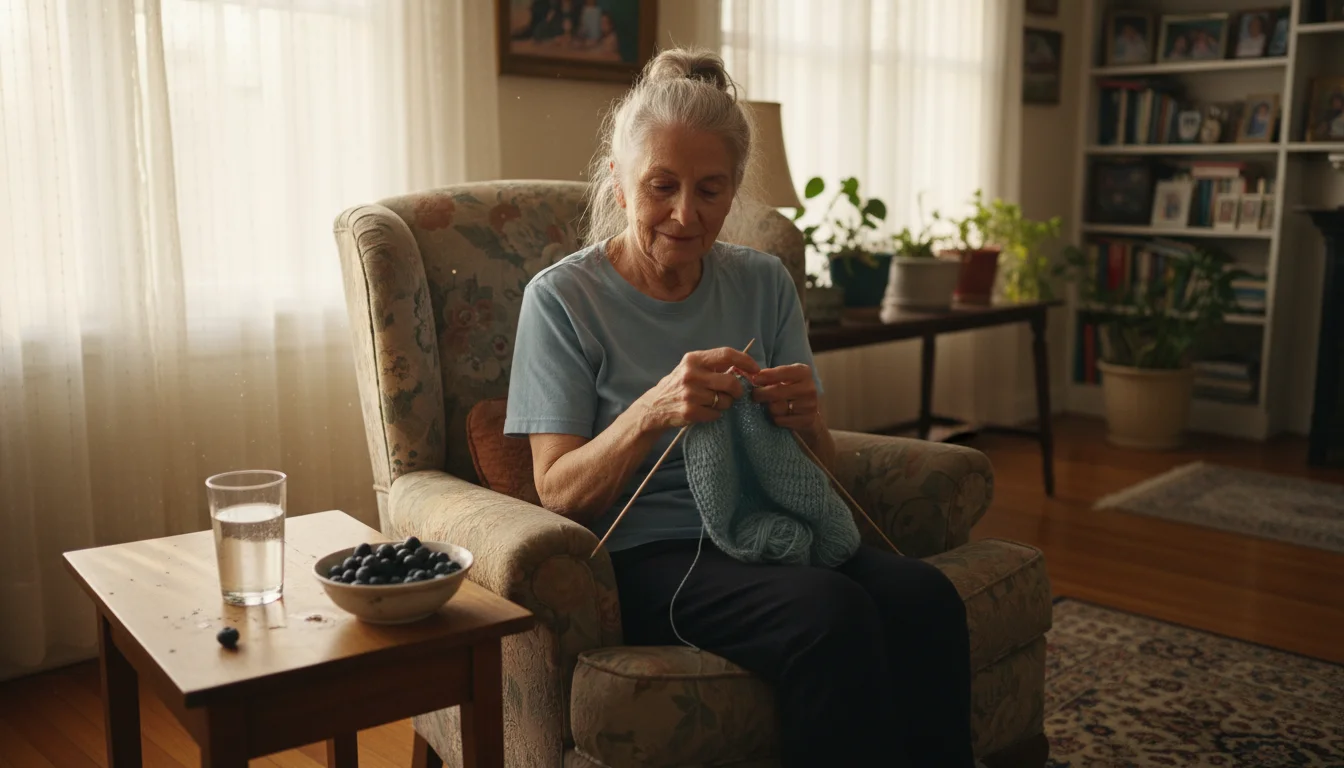
8. Stay Hydrated and Well-Nourished
The ‘Why’: What you put into your body has a direct effect on your physical stability. Dehydration is a common and often overlooked cause of dizziness, weakness, and low blood pressure, all of which can lead to a fall. Proper nutrition supports the muscle and bone strength you need to stay upright.
The ‘How’:
- Sip Water All Day: Don’t wait until you feel thirsty. Keep a water bottle or glass of water nearby and take sips throughout the day. If you get up at night, have a small glass of water.
- Eat for Strength: Make sure you’re eating regular, balanced meals with enough protein to support muscle health.
- Focus on Bone Health: Talk to your doctor about your calcium and Vitamin D intake. These nutrients are vital for strong bones, which can be more resistant to fractures if a fall does occur. Your doctor can advise if you need supplements.
- Limit Alcohol: Alcohol can affect your balance, coordination, and reaction time, and it can interact negatively with many medications. It’s best to consume it in moderation, if at all.
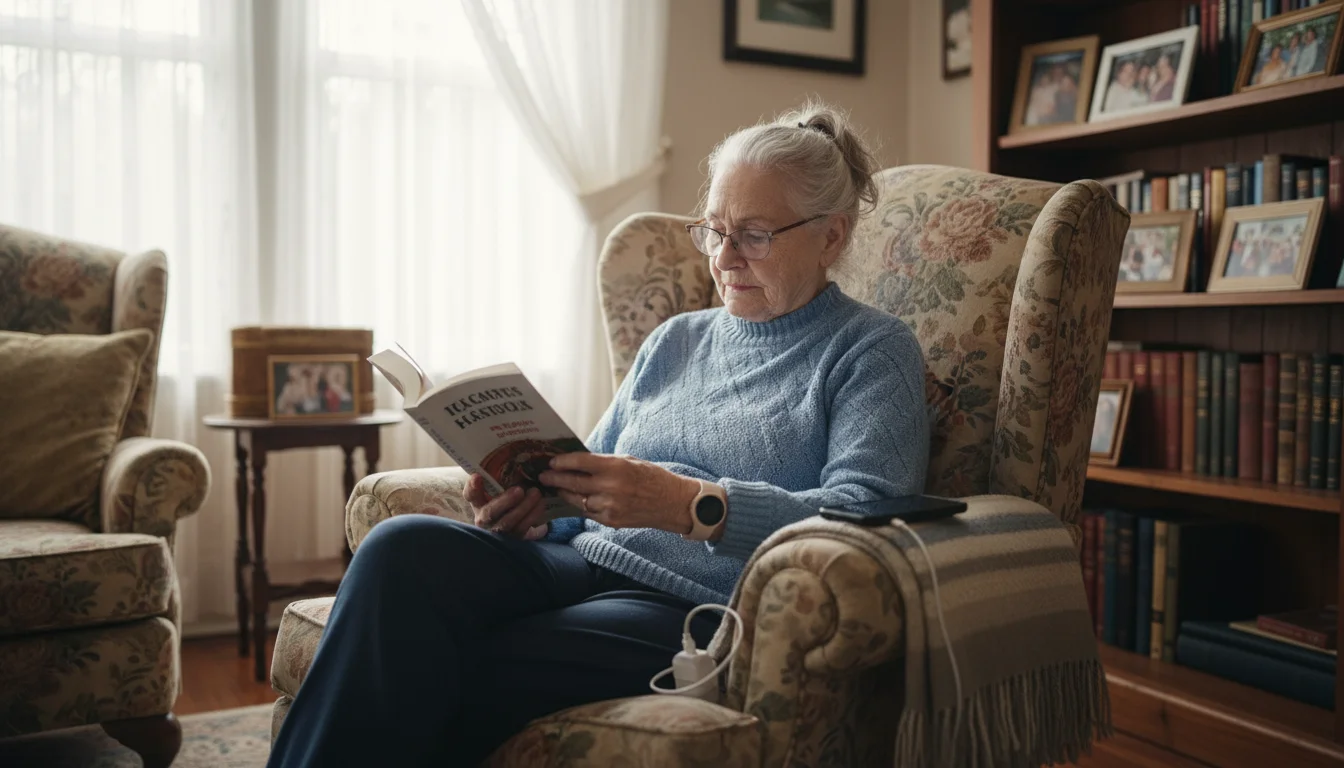
9. Have a Plan for Getting Help
The ‘Why’: Even with the best prevention, falls can sometimes happen. For anyone living alone, knowing you can summon help quickly is crucial for your safety and your peace of mind. A solid plan reduces anxiety and ensures a fast response in an emergency.
The ‘How’:
- Keep a Phone Within Reach: Never be in a situation where you can’t reach a phone. Carry a cordless phone or your cell phone with you as you move from room to room. Program emergency numbers and contacts into your favorites.
- Consider a Medical Alert System: These systems, often worn as a necklace or wristband, allow you to call for help with the push of a button. Many newer models have automatic fall detection, which calls for help even if you are unable to press the button. This is an excellent tool to help prevent falls for older adults from becoming a major crisis.
- Stay Connected: Arrange to have a friend, neighbor, or family member check in with you daily, either by phone or in person. This regular contact provides a social connection and a safety net.
- Know How to Get Up (If You’re Not Hurt): If you do fall and you feel you are not injured, take a moment to rest. Then, roll onto your side and push up to a hands-and-knees position. Crawl to the nearest sturdy piece of furniture (like a solid chair) and use it to help you get up. If you are in pain or cannot get up, do not try to force it. Call for help and wait for it to arrive.
Taking these steps to improve your home safety and personal strength is a journey of empowerment. Each small change you make contributes to a larger sense of security, allowing you to focus on enjoying your independence and living your life to the fullest. You have the power to create a safer future, one step at a time.
For expert guidance on senior health and finance, visit Eldercare Locator, AARP, Alzheimer’s Association, American Heart Association and Benefits.gov.
|
Fact-Checked Content
Our editorial team reviews all content for accuracy and updates it regularly. Learn about our editorial process →
|


